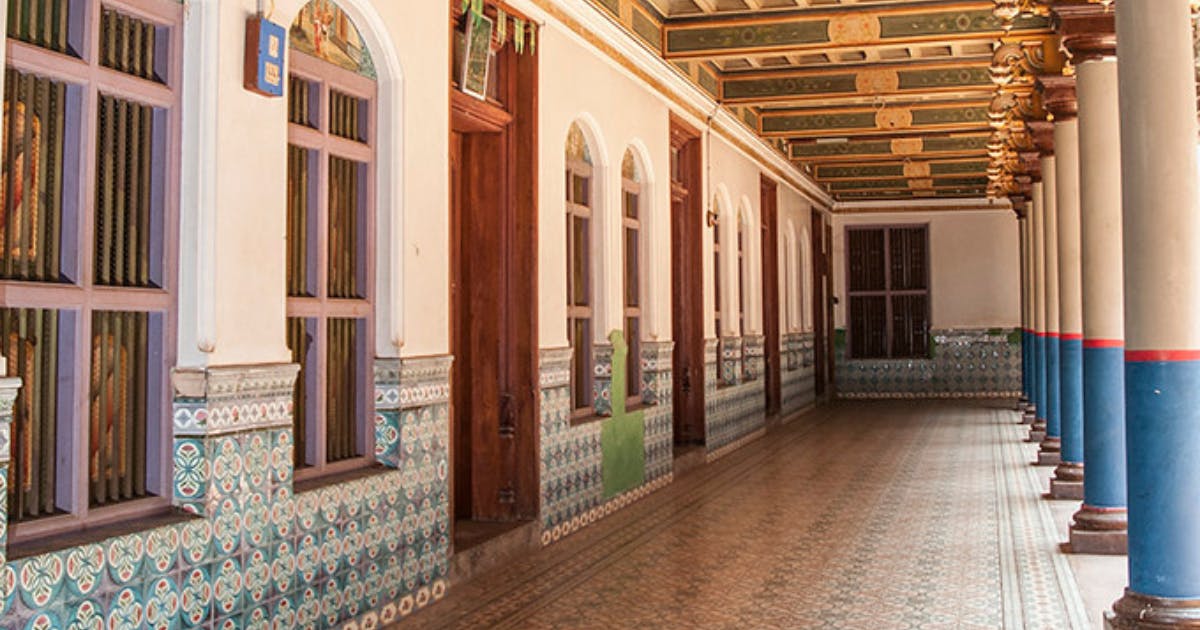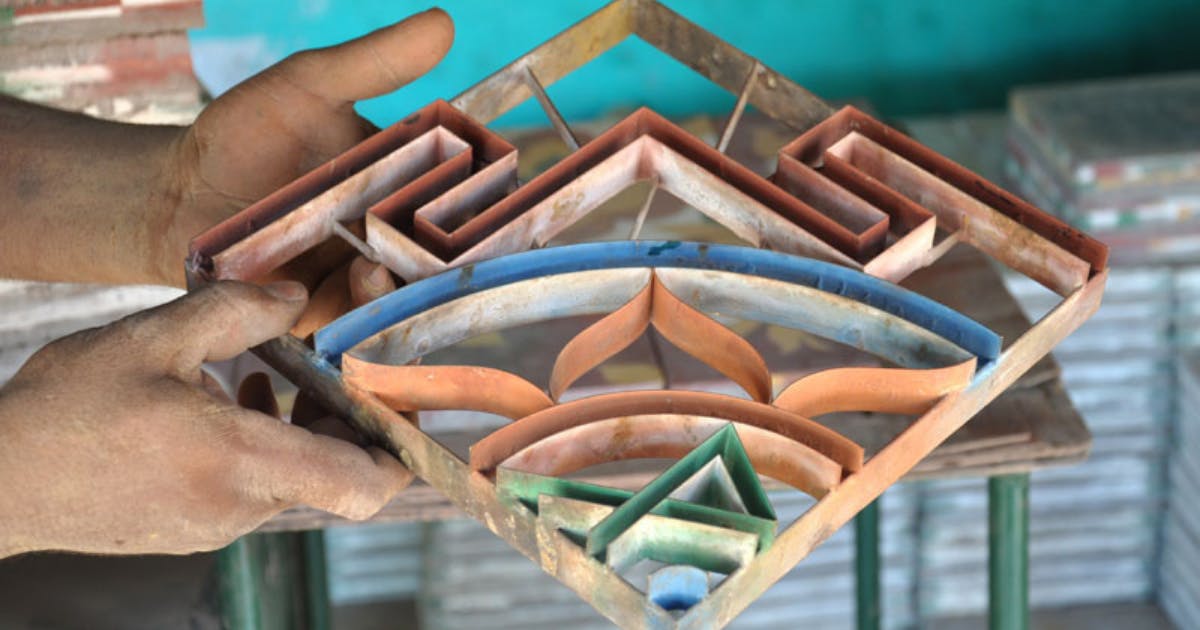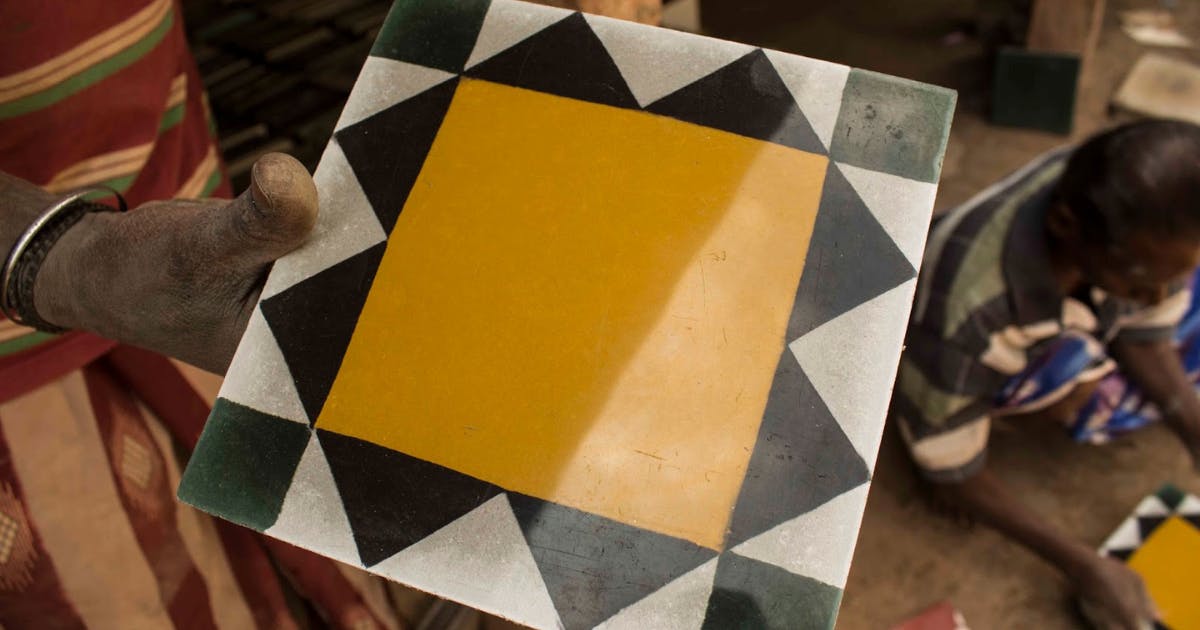The Timeless Tale of Athangudi Tiles: Whispering Secrets of a Bygone Era

In the ever-changing world of home design, Athangudi Tiles are a tribute to enduring workmanship and cultural depth. These one-of-a-kind tiles have withstood the test of time, radiating endurance as well as an aesthetic appeal that appeals to individuals seeking authenticity in their living spaces. We go into the origins, complicated manufacturing process, benefits, drawbacks, maintenance advice, and the artistry of laying Athangudi Tiles in this blog.
Unveiling the Origins: Where East Meets West
In the quaint villages of Chettinad, a brilliant idea took root. Inspired by the intricate designs of Victorian-era tiles from the United Kingdom, the people of this region envisioned creating tiles that could stand the test of time while proudly showcasing their heritage. Leading this endeavour was the visionary S. Gomathy from Kipling & Co. Arts. The intricate designs that covered Athangudi Tiles told tales of a bygone period. Originally, these tiles were exclusively available to the wealthy. They were amazed by the uniqueness and quality that these tiles provided to their residences.

The marvels of Athangudi Tiles:
- One-of-a-Kind Patterns: Athangudi Tiles boast exquisite and unique designs that infuse a distinctive character into your living space.
- Preserving Culture: Opting for Athangudi Tiles is a tribute to the rich history of South India, allowing your home to become a living testament to the region's traditions and heritage.
- Exceptional Durability: These tiles are resistant to scratches and stains while preserving their appeal.
- Eco-Friendly: Crafted using locally sourced materials like river sand, cement, and natural colors, Athangudi Tiles follow sustainable practices, promoting environmental harmony.
- Personalization Options: Athangudi Tiles offer an extensive selection of colors and patterns, providing you with the flexibility to infuse your distinctive style into your living environment.
- Cool Comfort: Even in scorching weather, Athangudi Tiles remain pleasantly cool underfoot, ensuring comfort during every step.
- Easy Maintenance: Keeping Athangudi Tiles in pristine condition is a breeze – a simple sweep and mop is all it takes, granting you more time to relish your cozy haven.
- Smart Investment: These tiles are a good choice since they last a long time and provide excellent value for your money, sparing you from having to replace them frequently.

The Flip Side: Examining Athangudi Tiles' Limitations
While Athangudi Tiles offer numerous advantages, it's essential to be aware of their limitations:
- Not Suitable for Wet Areas: Athangudi Tiles can be slippery when wet, making them unsuitable for bathrooms or consistently wet environments.
- Caution in Kitchens: Their smooth surface can become slippery when exposed to water, making them less ideal for kitchen floors.
- Limited Use on Walls: Due to their weight and thickness, Athangudi Tiles are primarily designed for flooring rather than walls.
- Challenges in Relocation: Moving Athangudi Tiles can be costly and requires careful handling to prevent breakage.
Practical Guide to Preserving Athangudi Tiles:
- Regular Cleaning: Maintain the shine of Athangudi Tiles by cleaning them with water mixed with a few drops of coconut oil.
- Regular Use: These tiles improve with age, so use them regularly to enhance their appearance.
- Avoid Prolonged Inactivity: Inactivity may dull their shine, so keep using them to maintain their beauty.
The Craftsmanship Behind Athangudi Tile Manufacturing
The process of creating Athangudi Tiles is meticulous and time-honored, relying on manual techniques without the use of firing or electricity. While modern machines could assist, the adherence to traditional methods adds a unique charm to the tile-making process.
Maintaining the Perfect Proportions: Achieving the ideal mix of ingredients is crucial to ensuring the quality and strength of Athangudi Tiles.
The composition involves:
Proportion for Light Colors:White Cement : Oxide : Sand : Grey Cement 1 : 1 : 1.5 : 3 Proportion for Dark Colors:White Cement : Oxide : Sand : Grey Cement 1 : 1 : 3 : 6
The Tools of Athangudi Tile Manufacturing:
- Simple Glass: A thin, 3mm glass sheet plays a pivotal role in the process, serving as the smooth surface where the tiles take shape.
- Bronze Tool (Pithalai): These special bronze tools are responsible for creating the intricate designs on Athangudi Tiles. Meticulously crafted in places like Konapattu, they're carefully shaped to match the desired patterns.
- Strong Frame: A robust frame with square pieces and two handles is essential for shaping the cement mixture into the planned tile shape. It ensures precise placement of the cement mixture and facilitates tile handling.

A Comprehensive Walkthrough of the Tile Manufacturing Process:
- Mixing and Drying: Ingredients are meticulously mixed in specific proportions, manually rubbed up to 20 times until completely dry.
- Making the Mixture Even: The mixture is passed through a sieve to achieve smooth consistency before being packed. Pure colors are added to attain the desired shades.
- Adding Water and Mixing: Water is gradually added while stirring to achieve the perfect texture.
- Getting Ready: The frame, dampened to prevent sticking, is placed on a clean glass surface, ready to begin the tile-making process.
- Adding the Design: The tool with the chosen design is positioned within the frame on the glass.
- Creating the Design: Colored mixture is poured into different sections of the frame to match the chosen design, taking on its shape.
- Removing the Tool: With great care, the tool is removed, leaving behind the wet colors. A mix of cement and sand (1:3 ratio) is gently sprinkled over them.
- Filling the Frame: The frame is filled with a mixture of cement, sand, and water in a 1:3 ratio to provide strength.
- Letting It Dry: The frame is disassembled, and the mixture is left to dry naturally at room temperature.
- Water Immersion: After gaining strength, the tile, still on the glass, is immersed in water for a day to enhance durability, with periodic water additions while resting in the shade.
- Smoothing the Edges: Once robust, the tile's edges are carefully smoothed using pieces of broken Athangudi tiles.
- Drying Time: The entire process spans approximately seven days, with the thin glass sheet (around 3mm) ensuring even drying.
- Safe Stacking: Tiles are removed from the glass and stacked with newspapers in between to prevent sticking when stacked.
- Batch Completion: These steps cumulatively require about nine days to complete a batch of tiles. Revealing the Artistry of Athangudi Tile Installation Laying Athangudi Tiles follows a distinctive process that sets them apart from conventional flooring. These tiles intentionally retain their rough edges, showcasing their unique imperfections. Skilled masons, predominantly from Karaikudi, play a pivotal role in this process, ensuring precise alignment and uniformity.
Key Aspects of Athangudi Tile Installation:
- Specialized Technique: The installation method for Chettinad tiles differs significantly from conventional practices, reflecting a unique approach.
- Skilled Masons: Masons hailing from Karaikudi possess expertise in this technique, acquired through years of learning and practice.
- Efficiency: Surprisingly, the installation process is remarkably swift, with masons capable of covering approximately 100 square feet of area in a single day, a testament to their meticulous planning and proficiency.
- Artful Polishing: Following tile placement, the subsequent 2-3 days are dedicated to careful polishing using rice husks, obviating the need for machinery. This polishing imparts a mirror-like sheen to the tiles, enhancing their aesthetic appeal.

The installation of Athangudi Tiles encapsulates an artistic blend of ideas and meticulous craftsmanship, resulting in visually stunning and enduring interiors. In conclusion, Athangudi Tiles not are durable and are aesthetically pleasing, but also display a rich history and cultural significance.






